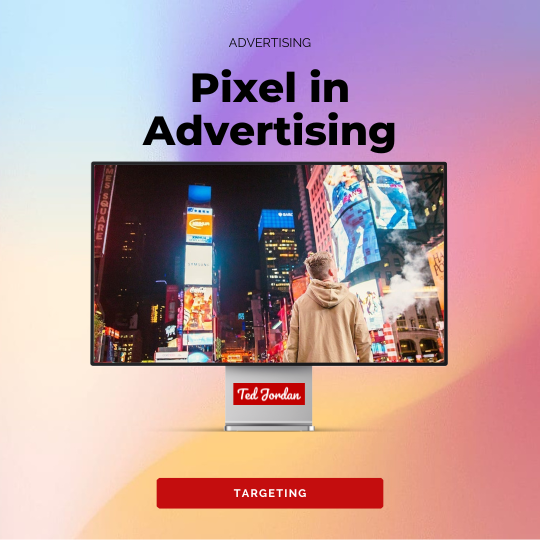Impressions vs views, difference between impressions and unique impressions, what are unique views… When you start a career in digital marketing, there are so many new terms to learn and to understand that you don’t know where to start.
Today, learn the difference between impressions vs views and what unique impressions and unique views mean.
Ready to learn?

What are impressions in digital marketing?
Impressions correspond to the number of times an ad or a page has been displayed or seen by a user. This digital marketing metric is often used in awareness campaigns.
Every time a person sees an ad or a web page, an impression is counted. If a person sees the same ad 3 times, the system will register 3 impressions. You can find the number of impressions of a campaign in reports or analytics tools (on a Demand-Side Platform, on Google Analytics, on a Supply-Side Platform, etc.).
It’s important to know that, depending on ad formats or viewability rules, impressions are not calculated the same way.
Types of impressions per ad format
The term “impression” doesn’t have the same meaning depending on ad formats or advertising platforms. For example, if you run a Billboard 970×250 ad campaign, an impression will be counted only if at least 30% of the ad pixels are seen by a user. That’s the rule for this popular IAB format.
In Digital Out-Of-Home, an impression corresponds to the number of times a DOOH ad is displayed; during a single impression (display), the number of users who can see the ad may vary from zero to several hundreds.
For display banners, it may happen, on RON inventory, for example, that an ad is displayed below the fold. Sometimes, this ad generates an impression even if the user did not see it. It’s a rare case but it sometimes happens with low-quality sites and publishers. This example highlights the difference between served impressions and viewable impressions.
Served impressions include viewable and non-viewable impressions.
Viewable impressions, or viewed impressions, correspond to the number of times an ad has been viewed by a user.
For social media campaigns, impressions mean the number of times your organic or paid content was displayed, directly from you or from someone who shared your content.

Impressions vs unique impressions
It’s important to know the difference between impressions and unique impressions to understand campaigns’ performance and optimise accordingly. Impressions, or total impressions, are different than unique impressions.
Unique impressions correspond to the number of times your ad or page has been displayed to unique users. No more than one impression can be linked to the same user, the same device ID, or the same IP address.
For brand awareness campaigns, you want unique impressions to be as close as possible to the number of total impressions. Basically, you want your ads to be shown to the largest audience possible. If you want to reduce this gap, you may use an ad frequency capping.
Ad frequency lets you decide how many times an ad can be displayed to the same user, per day, per hour, per week, in total, etc.
Impressions vs views explained
Now that you know the difference between impressions and unique impressions, it’s time to understand impressions vs views. Impressions and views don’t have the same meaning, but it can happen that they share the same data. Explanations…
An impression corresponds to the number of times an ad has been displayed.
A view corresponds to the number of times an ad has been viewed. For a user to view an ad, an impression must happen.
In simple words, impressions lead to views and views can’t happen without impressions.
The way views are tracked and counted depends on ad formats and platforms. For example, for pre-roll video ads, a view might be counted only after 3 or 5 seconds. If a user does not watch the video for at least 3 seconds, the system will register 1 impression but 0 view. If the user does watch the video for a longer period of time, the system will count 1 impression and 1 view. That’s why the impression number and view number may match.

For in-feed ads, views might correspond to the time when a video loads after a user clicked a thumbnail or a play button.
For CTV advertising or for VOL, the threshold may vary: a view might be counted after 30 seconds, for example. This threshold is often called viewability or viewability standard.
It’s crucial to understand the difference between impressions vs views in digital marketing. Otherwise, you may recommend optimisation ideas that could ruin your clients’ campaigns.
Make sure you know all the Programmatic basics and are confident with digital marketing tools: request access to our Programmatic Intro Course for free.
Total views vs unique views
Similar to impressions vs unique impressions, the difference between total views and unique views depends on the distinction between users vs unique users.
Total views correspond to the number of times an ad has been viewed by a user, with the idea that the same user might have viewed the ad several times.
Unique views are the number of times an ad has been viewed by a user, with the idea that a user can’t be associated with more than one view. If a user watches a video 3 times, the system will only count 1 view.

Know your campaign metrics
Impressions vs views, unique impressions vs total impressions, total views vs unique views, unique users, ad frequency capping… Now you know what these marketing terms mean.
To increase your chances of success in the digital marketing field, make sure to understand the difference between the most important KPIs in advertising and to understand your campaign metrics.
Depending on your clients and campaign objectives, you might not track the same metrics nor have the same KPI. To refresh your memory or to become a better AdOps or marketer, we recommend that you follow an online course that would help you grow in the advertising world.
FAQ
Reach and impressions don’t have the same meaning. In advertising, the reach represents the number of persons who could potentially see your ad; impressions represent the number of times an ad has been delivered.
This difference between reach and impressions leads to the notion of impression share. Impression share is the percentage of impressions you get compared to the number of impressions you could get (based on reach).
When talking about advertising campaigns, the number of impressions corresponds to the number of total impressions. Impressions and total impressions represent the same metric.
Total impressions and unique impressions are often different because they are not calculated the same way. The number of unique impressions represents the number of times an ad has been displayed for unique users. Impressions, or total impressions, don’t make this distinction between users.
Impressions and views are mainly used to track performance for awareness campaigns in advertising. Depending on your campaigns’ goals, one or the other may be more important. In general, views are more precise than impressions in the sense that a view only happens after an impression.
Only you can know which KPI is more important.
No, impressions and views are not the same. They are two distinct Key Performance Indicators (KPIs) in advertising. The system will only count a view after an impression, not the other way round.



